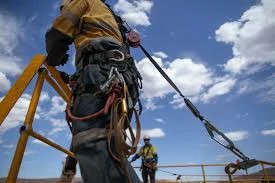


 349,500 Offered Certificates
349,500 Offered Certificates
 24/7 Online Training
24/7 Online Training
 Money Back Guarantee
Money Back Guarantee
 Fully Accredited Courses
Fully Accredited Courses

Created at: 22-02-2025 15:28
Working at heights presents inherent risks that can lead to significant workplace accidents. Performing a thorough risk assessment before starting any task at height is crucial for accident prevention, regulatory compliance, and overall workplace safety. In this blog post, we will discuss the importance of risk assessments, outline a step-by-step procedure to conduct them effectively, highlight common risk factors, and illustrate how proper training can better prepare workers to assess hazards.
Risk assessments serve several vital purposes:
Follow these steps to conduct an effective risk assessment before working at heights:
Begin by identifying potential hazards associated with working at height. Common hazards include:
Once hazards are identified, evaluate the risks associated with each. Consider the following questions:
After evaluating the risks, implement control measures to mitigate them:
Share the results of the risk assessment with all team members involved in the task. Ensure that everyone understands the hazards, the proposed control measures, and emergency procedures.
Conduct regular reviews of risk assessments to ensure they remain relevant and effective. Consider revising assessments after incidents or when changes in the working conditions occur.
Familiarity with typical risk factors can assist in evaluation and management:
Proper training enhances workers' abilities to effectively identify and manage risks associated with working at heights. A certified Working at Heights Training program equips employees with key skills:
To ensure your team is adequately prepared to assess hazards, consider enrolling in a Working at Heights Course Online. Our certified courses provide the knowledge and skills necessary for high-risk working environments.
Real-world applications of effective risk assessments can be seen in various industries.
Conducting comprehensive risk assessments is essential before undertaking any tasks at height. These assessments not only prevent accidents but also contribute to regulatory compliance and a culture of safety in the workplace. Through education and effective planning, workers can successfully navigate hazards and maintain a safe working environment.
Ready to enhance your workplace safety standards? Contact us today at [email protected] to learn more about our Working at Heights Training programs in Dublin, Cork, and Galway.